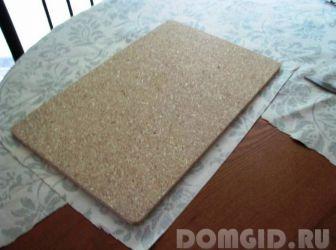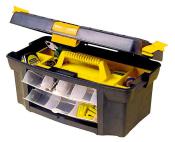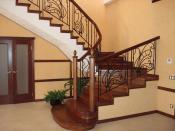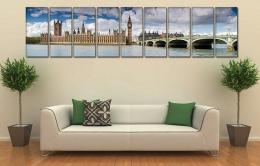Search
Login
Recommended
Modular paintings, what is it, modular paintings in the modern interior of a house
Modular paintings are the best choice for those who want to create a unique and modern interior with their own hands. It is with the help of this element of decor that you can, without much financial cost and effort, give individuality to any room, whether it be a bedroom, a living room or an entrance hall. The main feature of this type of paintings is that in essence these are several elements combining into one whole work. In this article we will tell you how to use the modular paintings to decorate the interior and how to make them yourself.
Content
What are modular paintings

Modular paintings for the interior were quite popular both in our time and in antiquity. There are no thematic restrictions for such a design. You can choose a still life, landscape, graphics, portrait, abstraction or any other subject. There is also no restriction on the technique of performing these works themselves. So, it can be embroidery, engraving, oil paintings, appliqués, watercolors, etc. At the same time, the most common are modular paintings, the canvas of which is made through digitization using a special printer on linen canvas. The finished picture is cut into pieces, which may vary in shape and size. It is in the feeling of the transition of a picture from one part to another that the originality of this element of decor consists. At the same time, the picture itself seems to acquire volume.
Depending on the number of elements, there are four varieties of modular paintings:
- a two-part painting is called diptych;
- three-part triptych;
- of four penaptich modules;
- of five or more polynaptic details.
DIY modular paintings

If you decide to bring sophistication to your interior using modular paintings, the easiest way to do this is to buy a finished work in a store. However, it is worth noting that their cost is far from low and despite the fact that you will be provided with a picture not of a painter’s work of the artist, but, most likely, an ordinary car-stamped picture.
Creating a modular picture with your own hands is quite simple and the process will not require any professional skills or special financial expenses. In fact, the only thing you need is a picture or fabric with a beautiful pattern that you like, plywood or polystyrene, scissors and PVA glue.
Foundation creation

As a basis for our future canvas, you can use ready-made blanks that are sold in stores or create it yourself. Finished bases are sold already with a fabric stretched over them. Thus, having spent a little time on studying the technology of independent drawing of modular paintings, you can create a work with your own hands. Otherwise, you will just need to carefully remove the fabric stretched to the base and use your favorite print or fabric with a pattern.

If you do not want to spend extra money on the purchase of a finished base for a modular picture, you can do it yourself, as there is no difficulty in this. In the first case, you can use a piece of polystyrene or fiberboard, as this is the easiest option for the foundation, the creation of which will not require any skills from you and will not take too much time.

In the second option, we suggest you use wooden slats to create a subframe. To create the basis for a modular picture of wooden battens, you need to take the battens of the same length in pairs and fasten them in the form of a frame under the picture using a furniture stapler or glue. Further, in the corners of our frame, it will be necessary to fix a piece of plywood in the shape of a triangle, thereby strengthening the frame for the picture. To give even greater density, you can also pull the fabric over the subframe and use a stapler to secure it from the back of the frame.
It is worth noting that the frames for different modules do not have to be the same size at all; they can have from two to four or more elements of different sizes. This design will give the picture a special expression.
Canvas creation

If you plan to make a modular picture from the fabric you like with the pattern, then in this case, you will need to cut it out in the shape of the prepared frame with a small margin. You can attach it to our base using a stapler, bending the edges of the fabric to the back of the frame. It is worth noting that this is the easiest and fastest way to create a modular picture with your own hands.
A slightly more laborious way to create a picture using a computer, an art editor and, of course, a printer. Having found the image most suitable for the modular picture, we open the editor, for example, the same Paint and proceeds to cutting the modules.

To do this, we divide the image into equal segments and save each of the segments as a separate file. After that, we print all the files on the printer and with the help of PVA glue we glue the resulting image fragments onto the finished bases. At the same time, you can choose both a single visual image and an abstract composition. Of course, you can not fool around with art editors and a printout, it will be enough just to order a print image, and then cut the finished work into the elements we need in size. You can also create modular paintings from photo wallpaper
 .
.
The final touch after the composition elements are attached to the frames, they should be coated with a special varnish, which will greatly simplify the process of caring for our modular painting.
Location of modules

As we said earlier, the elements of modular paintings can have different sizes, and their different arrangement can create an additional visual effect.
You can place pictures in depth or height. So, if you choose an image with a depth for a modular picture, then it can be glued not only to the bases of different heights, but also of different thicknesses. So, if you correctly position the protruding segments, the lightest on the thickest base and then in order to reduce the thickness, you can achieve the effect of a three-dimensional image.

The location of the modules in height allows us to arrange our modular picture in any geometric shape. You can stretch the image diagonally, bend it in an arc, line it up with steps, position it on a broken plane or on a smooth curve.
Modular paintings in the interior

Like ordinary works of art, modular paintings can be used to decorate a wide variety of rooms: office, children's room, bedroom, living room, restaurant, etc.
Where exactly you place your modular picture depends entirely on your personal tastes and preferences. We can recommend you which colors and themes are most suitable for certain rooms. So, in the corridor and hallway it is best to use concise modular paintings. This is due to the fact that in the corridor a person does not linger for a long time and looks around quickly, which means that he will not be able to appreciate the complex work. Moreover, a drawing that is too large or bulky in meaning may not have the best effect on the general perception of the small space of the corridor.

In the kitchen, it would be more appropriate to use a modular picture with a still life, with a vivid image of flowers or fruits, sunny landscapes. It is recommended that such paintings consist of four to five elements.


For the living room, modular paintings with portraits or landscapes are most suitable. In this case, the modules themselves are recommended to choose wide, and the composition should have a plot component. For example, you can use a 5-6-modular picture depicting a beautiful French park. If you want to enhance the perception of the work, you can make the backlight from above or below using spotlights.


In the bedroom, it is recommended to use paintings with pastel landscapes, delicate wildflowers or lyrical portraits. But in the library, on the contrary, the modular picture should be bright. It can be linocut, cityscape or abstraction.







